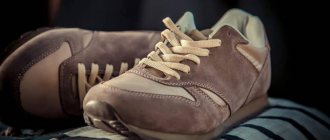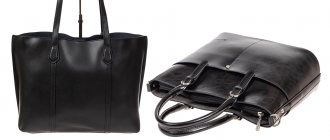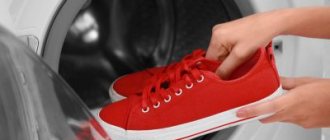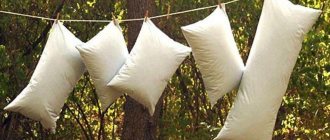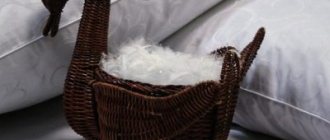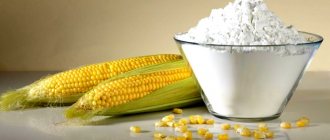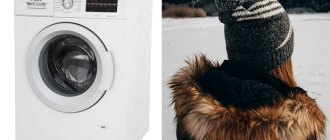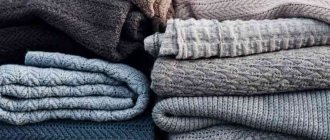Washing leather shoes in a washing machine
In cases of extreme necessity, you can still wash leather shoes in a washing machine, but in order to avoid the unpleasant consequences of mechanical action, you must follow several rules.
Firstly, you should initially wash leather shoes in a basin from dirt and dust, especially thoroughly washing the soles and heels. Throwing muddy shoes into the wash could damage your washing machine. In addition, after washing the shoes will be a dirty gray color with grains of sand ingrained into the leather. And it will be very difficult to wash off such contamination.
Secondly, it is important to remove all laces and wash them separately. If you leave the laces in place, the material will warp
Along with the laces, the insoles must also be removed. It is better, of course, to replace the insoles with new ones. It is the insoles that absorb moisture and act as a reservoir for bacteria. But, if it is not possible to replace the insoles with new ones, you can wash the old ones by soaking them for three hours in a warm soapy solution.
IMPORTANT: Be sure to dry the insoles thoroughly before putting them back!
The most important condition for washing shoes is to set the speed of the washing machine to a minimum level. The delicate wash setting is just right. An important factor in the future fate of your shoes will be the water temperature. We are used to using hot water to better remove dirt. But this works on durable fabric or a separate piece of leather, but not on a leather product. Hot water combined with mechanical stress and drying will ruin the item. Therefore, use water at room temperature.
Some housewives prefer to use cheap powder for all occasions. They also use it, bought for 40 rubles, to wash white blouses; they also use it to wash colored dresses; they also rely on it to clean shoes. But this is a wrong opinion. Of course, in the desire to save money, all means are good, but if the housewife wants to preserve the aesthetic appearance of the material longer, then you should worry about choosing a detergent.
Just as for each type of fabric you need to choose your own detergent, a powder that is, if not high, then at least of average quality, so for cleaning leather shoes you need to choose liquid detergents that do not deform the material during the washing process. In addition, if you wash shoes with powder, its large granules can become embedded in the material, ruining its structure and appearance.
Can leather shoes be washed?
When purchasing shoes in a store, take care of shoe care products. Fortunately, every store that sells shoes also offers related products - from jars of cream, stretchers, foams to sprays and special deodorants that effectively remove odor. The appearance of your shoes will look presentable for much longer if you take care of their care products. After all, uncleaned shoes quickly deteriorate and render them unusable.
However, if, with daily wear, the shoes have lost their former luster and newness, then use wet cleaning - both outside and inside the product. Wipe off dust from your shoes with a damp cloth; do not rush to water them.
Important! Manufacturers of leather shoes strictly prohibit washing their products in an automatic washing machine. In addition, to clean leather products, do not use washing powders, bleaches or stain removers. When treated with such aggressive agents, even the best elastic leather is greatly deformed, and the consequences of such cleaning can be disastrous: one pair of shoes can stretch greatly, while another, on the contrary, will become tight. But these recommendations can be slightly circumvented if you take into account the quality of your pair. As practice shows, if you approach this process wisely, it is quite possible to wash your shoes in a washing machine.
Leather shoes can only be washed by hand using the following products and materials:
- Special sponge or soft cloth.
- Soap.
- Water.
- Ammonia.
Local pollution
If a small area is dirty, you can try to do without completely immersing the jacket in water.
Liquid or glycerin soap can be used as a laundry detergent to remove street dirt stains.
Dilute a minimum amount of the selected soap base in warm water, moisten the sponge and gently wipe the stains. Then wash off traces of the solution by blotting the treated area several times with a damp cloth and wipe dry with a microfiber cloth. Dishwashing gel or liquid laundry detergent without dyes is best for greasy stains.
After applying to the stain, leave the solution until the fat is completely broken down. Then blot the foam with a damp microfiber cloth. Ammonia will help get rid of old stains. To do this, you will need to add 5 drops of alcohol to 500 ml of soap solution. Another way to remove grease stains is hot. It is only suitable if the stain is fresh: iron the stain several times with a low-heat iron through a paper towel. Repeat until the napkin has absorbed all the fat. If there is a paint stain on the jacket, you can again use the dry method. To remove it, you will need cotton wool and white alcohol (or a similar liquid). Soak a cotton ball or pad in the solvent and gently wipe the stain. To remove the pungent odor, sprinkle the treated area with lemon or orange juice. Vinegar diluted in water in a 1:1 ratio can help remove ink stains. The same solution effectively removes traces of raindrops from the skin. Mold. When stored in conditions of high humidity, mold forms on leather products. You can get rid of it by wiping the jacket in the affected areas with a cotton pad soaked in gasoline.
Areas of leather degreased with alcohol-containing solutions must be treated with colorless shoe polish or castor oil, this will prevent the material from becoming rough and cracking.
Drying
We have completely figured out how to wash shoes in a machine. Washing your shoes properly is half the battle. The product must be dried according to all the rules so as not to spoil it at this stage of care. We advise you to adhere to this series of recommendations:
You also need to know about proper drying
- Do not dry your shoes at high temperatures! This applies to its location on radiators, pipes, other heating devices, and in high-temperature dryers. Even the hot air of a hair dryer and drying in direct sunlight will damage your shoes! Leather products are deformed from such influences; on others, the adhesive layer that connects the upper to the sole “melts”.
- We would separately warn those who are planning to dry fabric sneakers on a radiator, thinking that such drying will not harm the material, especially if it is cotton. If the detergent is not completely washed out, then when it comes into contact with hot metal, it will quickly bake, turning into unsightly brown stains.
- Ideal drying is at room temperature, in a well-ventilated area. This is either at home or on a shaded balcony.
Stuff with paper for quick drying
- Stuff highly absorbent paper into your shoes. This will help it not lose shape during drying and will take away excess moisture. Change this “filler” as it becomes completely moistened. We do not recommend using newspapers, magazines and other printed materials - once wet, they can stain your shoes with their colors. The best option is plain white paper.
- We advise you to treat your boots with a water-repellent impregnation after complete drying. This is a special aerosol that can easily be found in both shoe stores and household chemical stores. The product will help keep your feet from getting wet in bad weather for as long as possible, and keep your sneakers and sneakers looking presentable for a long time.
The nuances of washing winter shoes in a washing machine
Boots and shoes for the cold season are made of dense materials and insulated with fleece or faux fur.
As a last resort, you can spin winter textile duvets in a drum. If there is no special program for washing shoes, then turn on the gentle (manual or delicate) mode. Use liquid detergents.
I clean my leather shoes by hand. With a very dirty one, I wash off the dirt with a wet sponge, and I work quickly so as not to wet the top. If there is not a lot of dirt, I simply remove it with a damp cloth. Then I stuff it with crumpled paper and leave it to dry.
The source of bad odor is the insoles. They become saturated with sweat and eventually begin to stink. That's why I always wash them separately. I pour warm water into a bowl and add powder or soap. I soak it for a couple of minutes and brush it with a brush.
I blot it with a towel and leave it to dry. If washing didn’t help much and the shoes continue to smell, I wipe the insoles and inner walls with diluted essential oil.
Any kind will do, but tea tree is better, as it is a strong natural antiseptic. Dry shoes require softening, so I apply cream, impregnation or wax.
How to properly wash winter shoes in a machine
When choosing a method for washing shoes in a washing machine, you should also decide on the best way to clean the stains, because warm water alone is not enough, and the stains will still remain. You should not immediately add powdered detergents when washing, since the granules remain in the fibers and are difficult to wash out. Because of this, light-colored shoes turn yellow after drying, and white stains may remain on colored shoes.
Experienced housewives add products of liquid or gel consistency, but this should not be hair shampoo or liquid soap. Now in stores you can select special compounds designed to clean dirt in automatic machines, for example, “Persil”, “Losk”, “Ariel” and many others. etc. It is allowed to use cleaning capsules, which dissolve in the drum in warm water and remove dirt well. Plus, things smell nice after this treatment.
So, the question of whether winter shoes can be washed by machine has been resolved; all that remains is to correctly follow the sequence of actions and bring the product into proper condition. The main washing steps are as follows:
- Remove all dirty items from the drum; shoes should be washed in the machine separately.
- Place one or two pairs of shoes (maximum) in the “machine machine”. A laundry bag or pillowcase is required.
- If capsules are used to clean the product, then add it to the drum with the shoes; gels and liquid formulations are poured into the powder container.
- Close the washing machine door.
- Select the shoe washing mode. If this is not the case, then you need to turn on the function for cleaning delicate fabrics, set it to a maximum of 40 degrees, remove drying and spinning, and also turn off the speed.
- After the end of washing signal, remove the bag.
- Fill the shoes with clean white paper so that the product does not deform during natural drying.
- It is best to send your shoes to dry on a balcony or other open area, where there is plenty of air and no direct sunlight.
Attention! Exposure to direct sunlight has a negative impact on the condition of the shoes, and there is a possibility that the adhesive layer will be destroyed.
Washing in a washing machine
uhod-3 uhod-4
If there is minor dirt on the lining, you can use dry cleaning. Foams and aerosols are used for this. They help push them out by influencing the connections that are between the contaminant and the material. To do this, you need to spray the product over the surface of the unclean area and leave it for some time to act.
Attention!
The instructions indicate how many minutes you need to wait.
Then, using a brush, the dirt is removed. Among the products suitable for dry cleaning: SANO, K2r, etc.
We recommend
It is not advisable to use the powder, because it is not easy to wash off.
For convenience, the product is hung on hangers. The lining must be carefully soaped and rinsed using a flexible shower under a gentle stream of water.
It is important that splashes in small quantities fall on the lining. Then let the water drain and place it flat on a mohair towel.
To dry completely, hang on hangers.
Only after it has completely dried can the jacket be worn, otherwise it may stretch and lose its shape.
Attention!
Leather items can only be dried at room temperature. Do not place the product near a heating system or on a radiator.
This material is as close in appearance to genuine leather as possible. Eco-leather items also cannot be washed in a washing machine. Only hand wash in water no higher than 30 degrees.
For minor stains, clean with a damp cloth. Otherwise, the procedure is similar to cleaning genuine leather products.
Attention!
Do not use powder containing abrasive particles or chlorine. They can ruin the material.
• You need to dry the leather in a well-ventilated place or in the fresh air, so that it is not exposed to direct sunlight;• After the appropriate procedure, you need to turn the leather inside out and hang it on a hanger of a semicircular radius;• You can let the leather dry at room temperature, leaving the product in horizontal position and covered with a clean cloth with good absorbent properties;
https://www.youtube.com/watch?v=IwROGnjCW5Q
• After removing individual stains, you need to dry the skin so that water from them does not fall on other areas; • Do not twist leather items, the water should drain by itself. How to remove stains from leather? To remove grease stains, you need to mix starch in equal proportions with refined gasoline. Treat the stain with the resulting mixture and leave for 15 minutes. Next, remove the starch with a paper towel and wipe the skin with a soft, damp cloth.
Oily stains from the skin can be cleaned using regular chalk. Crumble a piece of chalk onto the problem area and leave for a day. After this, shake off the crumbs and thoroughly clean the stain with a soft brush or sponge. Gasoline is also used to remove some grease stains.
To remove complex stains, you can use laundry soap. There is no trick: lather the stain with it and rub it with a sponge. Then dry thoroughly with a soft cloth. If the stain is very stubborn, you can repeat until the stain is eliminated. But it is better to do this in several passes, since prolonged interaction of the skin with soap can ruin the thing. Vinegar diluted in water can help remove stubborn stains.
Light stains can be removed using a flannel cloth or rag and washing gel. Simply dilute the gel (50 g) in a small amount of warm water (300 g), wet the cloth and wash the surface. Light dirt and grass stains can be easily removed with the gel.
Also, when cleaning, pay attention to the soles and heels. Wash the laces separately
Then you should leave the shoes to dry in a well-ventilated area (preferably on the balcony) for three to four hours. The final touch of delicate cleaning will be wiping the shoes with castor oil. The oil will give the product its original shine, shine and prevent deformation of the leather. Regular care of leather shoes will significantly increase their service life.
Use a good cream
The cream is a basic product for keeping leather shoes clean. It is very important to choose a high quality composition. The main components of the product should be vegetable or animal fat and wax. These substances protect the material well from moisture. The brands Salamander and Salton, which produce high-quality shoe cosmetics, have proven themselves to be excellent.
Care compositions should be selected depending on the type and color of the material. Products are produced for white, black, brown, and red skin; in the windows you can find entire sets, including a line of care products, along with devices for applying the compositions. What cosmetics should you pay attention to?
- Salamander cream containing wax. Absorbs quickly and has softening properties. Prevents water from penetrating inside and refreshes color. Can be used daily. Easy to use - applied to the surface with a soft sponge.
- Salamander cream with built-in sponge. The composition is easy to dose thanks to the built-in mechanism; it easily penetrates the skin without leaving streaks.
- Salton cream. It contains components that are completely safe for humans. Softens the material and is quickly absorbed. There is no need to additionally polish the surface of the shoe.
Remember - automatic washing of leather shoes is strictly contraindicated. Clean your shoes using a regular soap solution, as well as special care products. By daily treating the surface with creams and impregnations, you will preserve the appearance of your favorite pair for a long time.
Interesting:
- Can suede boots be washed in the washing machine?
- Is it possible to wash boots in a washing machine?
- Is it possible to wash a leather bag in the washing machine?
- Is it possible to wash winter shoes in a washing machine?
- Washing Kuoma boots in the washing machine
- Washing eco-leather strollers in a washing machine
Reader comments
- Share your opinion - leave a comment
Preparing for washing
Before the process begins, the degree of wear, the strength of the decor, the presence of holes and hanging loose elements are examined.
If it turns out that the lining of sports shoes has come apart, the foam rubber will come out during washing. If the decorative elements are not securely attached, they completely refuse to wash them in an automatic machine. After the process, all loose parts may fall off.
Remove dirt from the sole under running water. Be sure to remove small stones stuck in the tread pattern.
Remove stains from the surface of light-colored shoes. They will be more difficult to remove after washing.
Before placing in the drum, remove the insoles and remove the laces. A washing bag must be used. You can use an old pillowcase for these purposes.
If you use dense fabric at the same time, this will reduce the shock load on the shaft and protect the entire machine from wear.
Important Tips
Before putting on new suede shoes, treat them with a special protective spray. Use the product according to the season. For winter, autumn and early spring it is better to use water-repellent sprays. They allow the suede to remain dry even on very wet roads. In addition, after the sole and upper material dry, the suede remains beautiful and fleecy. For summer shoes made of special leather, it is better to use dust-repellent compounds. They preserve the brightness of a black product and the freshness of light-colored shoes.
After treating the suede with the spray, let it sit for at least three hours and only then put on your shoes. Renew the spray layers periodically approximately once every 2-3 weeks or as appropriate.
Interesting: How to clean a greasy sofa
Features of washing sneakers made of various materials
The cleaning method should be chosen depending on the material of the product.
Nubuck
This material does not like moisture, so it cannot be machine washed or submerged in water. Instead, it is better to use dry or wet cleaning methods.
- Use a damp cloth to remove dirt from the soles of your sneakers.
- Use a brush to remove dust from the surface.
- To remove stains, you can use a specialized shampoo or a slightly damp cloth.
- After removing dirt, treat the coating with a water-repellent spray to impregnate the nubuck.
Suede
To care for it use:
- double-sided brush;
- foam or shampoo for cleaning;
- water repellent spray.
To get rid of dust and dirt:
- Brush the surface with a double-sided brush or a stiff clothes brush. Suede material is always cleaned against lint.
- You can get rid of greasy stains using talcum powder, chalk or tooth powder. Pour the powder onto the stain and scrub with a stiff brush. Leave on for 15 minutes, then wipe off any remaining product.
For wet cleaning you will need a piece of lint-free cloth, suede shampoo or liquid soap and warm water.
- Dissolve the detergent in water and soak a cloth in it until it is slightly damp.
- Treat the shoes so that the material does not get wet through.
- Wipe your sneakers with a clean, damp cloth to remove any remaining shampoo.
- Remove excess moisture with a dry paper towel.
- Wait until completely dry.
Leather
It is easy to get rid of impurities on the skin using ordinary wet wipes. But if you want to wash leather sneakers, use a soapy solution.
Synthetics
A solution of laundry soap is suitable for washing sneakers made of synthetic materials and textiles. Powders and products in the form of granules, which are difficult to wash out of the coating, are not suitable. Synthetics do not like bleaches.
Such products can simply be sent to the machine. But dirt is difficult to remove from synthetic sneakers, so it is better to soak them briefly before washing.
Cleaning light suede
Often you have to clean light-colored suede shoes from dirt, since they suffer especially badly from street wear. To remove stains from such material, first clean the shoes of dried dirt and dust. Next, prepare a light-colored cleaning solution from half a cup of skim milk, 1 teaspoon of baking soda, and 2 drops of ammonia. Mix everything well. Use a clean sponge to pick up a little solution and rub the stain thoroughly. Then remove any remaining moisture with a dry cloth or sponge. Let the shoes dry, then lift the pile with a brush.
Before using any wet method of cleaning suede, test how the solution works on an inconspicuous area of the material. As a rule, this is the inside of boots or boots in the area of the zipper or lace. Do not use aggressive detergents containing chlorine. They can discolor black shoes.
Shoe care tips
To ensure that your shoes serve you for many years and always look impeccable, and you don’t have to wash your leather shoes often, listen to the following tips:
- If your boots are dry, rub castor or vegetable oil into them and then polish them. The oil will soften the skin.
- Shoes can be made practically waterproof by lubricating them several times with linseed oil along the seams. And if you want to achieve long-term and high-quality results, but buying expensive professional products is not part of your plans, click on the link where we have collected the simplest and most effective recipes for DIY water-repellent impregnations for shoes.
- Clean suede boots with the rough surface of a matchbox or the crust of stale bread.
- Brown leather shoes can be easily cleaned with coffee grounds.
- If wet leather shoes become hard, rub them with Vaseline after drying. After a few hours, clean with cream.
- Clean suede shoes from minor dirt with a regular eraser.
- Remove greasy stains on leather shoes with a solution of soda (1 teaspoon of soda per 0.5 cup of water). Rub until foam forms, then remove with a soft cloth.
- To wash leather shoes and remove traces of dirt and old cream, use a special shampoo or a regular glass cleaner. Wet a cloth with the product and wipe first one shoe and then the other. Afterwards, apply any fat and let it absorb. Fat perfectly repels water and will prevent the skin from decomposing and deforming. After treatment, apply cream and polish the shoes.
- Don't wear the same pair of shoes every day. Assemble a “bench of spares”, with a working mode of at least “two in two”. When going out, place a pair of shoes with the lasts facing inward so that the shoes don’t lose their shape and don’t turn up their toes.
- To prevent fashion leather shoes from losing their attractive appearance, use rubber galoshes during the rainy season. This is the best way to protect shoes from water.
Handwash
This type of washing also has some nuances that are worth knowing:
- When washing white shoes, you can use whitening toothpaste, bleaches, and stain removers. You can add 1/4 tsp to the soap solution for washing. citric acid or 1 tbsp. l. table vinegar per 9 liters of warm water.
- Hydrogen peroxide 3% will help remove stains from white shoes. It is mixed with water in a ratio of 1 tsp. for 2 liters of water.
- The water temperature should not exceed 30–40 degrees.
- To remove gray-yellow stains from white shoes, you can rinse them in a vinegar or peroxide solution.
- In order to get rid of white soap stains, sometimes it is enough to rinse the shoes well again.
- Bleach and chlorine-containing detergents should not be used on colored shoes - they may fade.
- Ugg boots, house slippers, textile pointe shoes and ballet shoes, shoes made of synthetic fabric, rubber boots, and textile sports shoes are perfectly resistant to hand washing.
- Rubber boots cannot be cleaned with turpentine, 72% laundry soap and gasoline. The shoes will be hopelessly damaged. Silicone grease will add shine to rubber boots.
Washing shoes by hand is a more labor-intensive process than washing them in a machine:
- Pour warm water into a basin or bathtub. The temperature should not exceed 40o.
- Dilute washing gel in water. You can add planed laundry soap.
- If your sneakers or sneakers are white, you can soak them for half an hour.
- Drain the dirty water and make a new soap solution.
- Use a sponge or brush to remove all dirt.
- Rinse your shoes thoroughly.
- Blot with a towel.
- Stuff it with paper and set it to dry.
Washing shoes correctly
When cleaning a pair of shoes, start from the sole. Take a brush with stiff bristles and use pressure to remove any dirt that has accumulated in the tread. It is prohibited to completely immerse leather shoes in a basin of water; such a procedure can damage the material and adversely affect the bonding areas.
It is strictly prohibited to use an automatic washing machine to clean genuine leather shoes or a pair of leatherette shoes.
Washing is done by hand. Prepare a sponge and a small amount of soap solution, for dilution of which it is recommended to use liquid soap. Dry mixtures must be well mixed in water to avoid an abrasive effect when cleaning. Leather products must be cared for using special products designed specifically for these purposes.
- Cleaning gel "Tamaris". The active substance penetrates deep into the pores of the material, removing the most difficult stains.
- Cleanser "RenoMat". Can be used on a smooth surface; there is no need to rinse off the composition after application. Copes with oil and grease stains.
- Aerosol "AvelDetacheurHussard". Universal composition, suitable for leather and textile products. Due to the release form it is very convenient to use.
It is necessary to use special products strictly following the instructions provided by the manufacturer.
You can clean white leather boots in a traditional way. Prepare a weak soda solution (1 spoon of soda per 0.5 liter of hot water). Dipping a sponge into it, carefully walk over the surface of the shoe, removing any accumulated dirt.
In winter, roads and sidewalks are sprinkled with deicing chemicals. After walking the streets, you may notice white lines on your shoes. They not only spoil the overall appearance, but also threaten the condition of the skin. A vinegar solution will help get rid of dirt. Mixing proportions: 1 teaspoon of table vinegar per glass of warm water. Chemical traces are washed off from the surface with a sponge soaked in the solution using circular movements.
In the assortment of shoe cosmetics you can find a special cleaner for salt particles. When spraying the aerosol, there is no unpleasant odor; the product is applied to the area of stains and after a few seconds is washed with a soft sponge or cloth.
It is prohibited to wash winter boots that have natural fur insulation on the inside; this can cause deformation of the shoes, loss of some properties and appearance.
Also, do not forget about processing the zipper, if there is one on the shoe. Fasten the product and use a stiff brush to remove any debris that has accumulated in the lock. The laces should be pulled out and washed separately.
The nuances of washing winter shoes in a washing machine
The main question that anyone who wants to quickly and effectively clean their shoes should ask is whether it is possible to wash winter shoes in a washing machine, and how this will affect their appearance. Not every shoe or boot can withstand this procedure.
Any type of product can be damaged by cleaning in the machine’s drum, so it is important to study the features of the shoes in detail and read the manufacturer’s recommendations on the label
Popular and large shoe manufacturers provide detailed information on how to machine wash shoes. This could be a label on the product itself, a booklet in the box with boots, as well as detailed information about care on the brand’s official website
It is important to pay attention to the main material from which the product is made. The easiest way to solve the problem is how to wash shoes made of fabric in a washing machine. You need to be as careful as possible with leather or suede.
Cases in which it is prohibited to wash shoes in a washing machine include the following:
You need to be as careful as possible with leather or suede. Cases in which it is prohibited to wash shoes in a washing machine include the following:
- If the sole or other components of the shoes have become unstuck (such shoes first need a good repair, and then a thorough cleaning);
- If the quality of the boots is low (visible adhesive, threads, cracks, etc.);
- If the shoes have a membrane;
- If there are a large number of decorative elements on the surface that will come off when rotating in the drum.
If there are inserts made of leather substitute, you can machine wash the boots after taking a number of measures to preserve these elements
You need to be especially careful when handling items with fur, as if you choose the wrong washing mode, the fur will come out and the shoes will become unusable. When asking how to wash leather shoes in a washing machine, the housewife must take into account all possible risks
Natural material may dry out and become tight after processing.
Basic rules for washing in a machine
To wash shoes in a machine without damaging their appearance and losing properties, you must consider the following:
- The boots must be intact, that is, when viewed, there are no visible elements that have come unstuck, torn off, or damaged.
- The product must be cleaned of large lumps of dirt. You can pre-rinse the sole under running water or soak it in a basin.
- All laces and rivets should be removed before loading shoes into the drum.
- The best way to wash shoes in an automatic washing machine is to use special bags and pillowcases. Some housewives load the machine drum with unnecessary rags to avoid damage from heels.
- Washing with subsequent spinning is not allowed; this mode must be turned off.
- You can only select the delicate mode. Some models are equipped with a special function for cleaning shoes. The optimal temperature is 30–40 degrees. If you choose higher, the product will fade and become unstuck from exposure to hot water.
- Shoe insoles should be removed before treatment. They are washed separately.
- You can wash winter shoes with powder, capsules or special gel. The only caveat is that the product must be of high quality. If you need to clean white shoes, it is recommended to add a gentle bleach, for example, Vanish. If you choose a low-quality washing composition, the water-repellent layer of your shoes may be destroyed.
The maximum permissible number of boots loaded into the machine is 2 pairs. If you ignore this rule, you may end up with broken equipment and broken glass. It is better not to clean heavy shoes in a machine, so it is better to wash ankle boots or other large boots by hand.
Cleaning dark gloves
Most often, people purchase leather accessories in dark colors: from different shades of brown to black or dark blue. Or even dark red. They are more practical, fit better with other things, and last even longer, because signs of wear are less noticeable on them.
Cleaning gloves depends greatly on their color. Dark products cannot be treated with products that contain bleaching components.
Soap
The easiest way to clean leather gloves from dirt is with a soap solution:
- Mix warm, not hot, water with soap shavings, dishwashing gel or a small amount of laundry detergent to create “soapy” water.
- Wear one glove on your left hand, and on your right hand, which you will be cleaning, it is better to wear a protective nitrile work glove to protect your skin from the cleaning agent.
- Lightly soak a cotton pad, soft cloth or fiber cloth in the soapy water and wipe the surface with it.
- Do not wet the haberdashery too much.
- Lay leather items to dry horizontally, preferably on a towel, so that the water is absorbed immediately.
Vinegar + alcohol + water
This home method is suitable for cleaning noticeable dirt and will also get rid of unpleasant odors, if necessary. Vinegar adds shine and eliminates odor. The alcohol will cleanse the skin of dirt. Water will soften this seemingly “nuclear” composition.
Procedure:
Mix all ingredients equally. Apply to skin using a soft cloth or sponge using circular motions. Clean and see: if the stains are not gone, repeat the procedure. Wipe the surface with a cloth soaked in clean water. Dry away from radiators or sunlight - this is an important condition; its violation will cause cracking of the skin.
Ammonia
A mixture of water and ammonia solution will help get rid of stubborn dust and abrasions on dark items:
- Take a small plate or other container.
- Pour 100 ml of water into it and about 1/4 of this amount of ammonia (1 tbsp is enough).
- Soak a soft cloth in the resulting solution.
- Clean away dirt.
- Be sure to wipe your gloves with clean water.
After such cleaning, it is better to dry the products directly on your hands, since treatment with ammonia can cause them to decrease in size and become rough.
After the products have dried, rub them with baby cream, castor oil or any other emollient.
Gasoline + turpentine
The most radical way to help clean leather gloves from serious dirt is as follows:
- Mix 1 part gasoline in 2 parts turpentine.
- Soak a rag in the mixture and treat the leather surface.
Be prepared for a strong, strong odor. Don't worry, it will disappear over time, but we recommend carrying out such aggressive cleaning at the end of the season, when you can forget about protecting your hands from the cold for several months.
Rules of care
To reduce the need for washing or cleaning shoes, you should adhere to a number of rules for caring for them:
It is not recommended to wear espadrilles in dirty or rainy weather.
It is important to avoid puddles. It is recommended to remove dirt immediately after it appears. The longer stains remain on the surface of the product, the more difficult it is to get rid of them. If your espadrilles get wet, dry them thoroughly.
To do this, they should be stuffed with newspapers and taken out into the fresh air. Before going outside, you should treat espadrilles with special moisture-repellent compounds. For storage you should use shoe boxes. This will prevent dust from settling and minimize the risk of staining on the surface. After each exit, clean with soft brushes. This will help prevent stains from layering on top of each other.
Video material
Today, you won’t surprise anyone with a loud and expensive shoe brand. People who know how to carefully care for their shoes and prolong their original appearance for many years, regardless of the intensity and conditions of use, are much more respected. We hope that thanks to the information provided in this article, you will find a way to properly care for your favorite shoes, and they will delight you with their beautiful appearance for many years.


